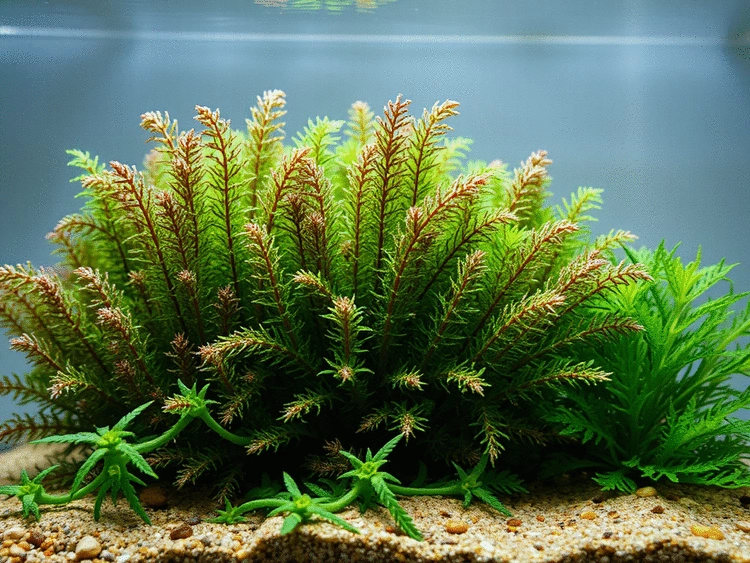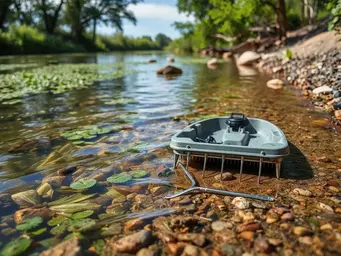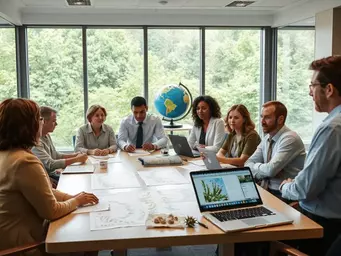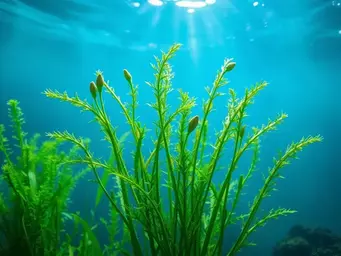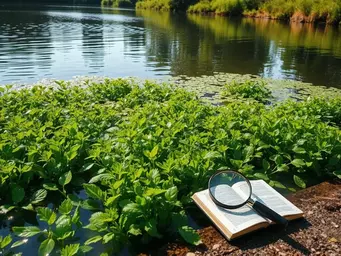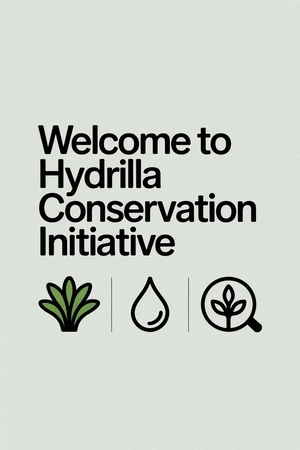What if your understanding of an invasive species could be the key to protecting local ecosystems? In the battle against hydrilla, knowledge is power. By mastering the identification of its growth stages, you can become an active participant in environmental stewardship.
What You Will Learn
- Hydrilla's invasive nature poses significant risks to native aquatic ecosystems.
- Identifying growth stages, from turions to mature plants, is essential for effective management.
- Environmental factors like temperature and nutrient levels greatly influence hydrilla growth patterns.
- Recognizing the signs of hydrilla infestation early can prevent extensive environmental damage.
- Utilizing integrated management techniques enhances the effectiveness of hydrilla control strategies.
- The role of community involvement is crucial in monitoring and managing invasive species like hydrilla.
Hydrilla Growth Stages: From Dormancy to Dense Mats
This visual outlines the distinct growth stages of Hydrilla verticillata, highlighting key characteristics for identification and effective management strategies.
Growth Stages & Characteristics
Dormant Stage
Survives as turions (bud-like) and tubers (in sediment). Can remain viable for years.
Early Growth Phase
Horizontal growth along the bottom. Emerging whorled leaves (5-7 per whorl).
Mid-Growth Phase
Significant stem elongation and larger, more pronounced leaves. Begins to dominate.
Mature Stage
Forms dense mats. Long stems, thick leaf density, visible reproductive features (flowers).
Key Differences: Hydrilla vs. Elodea
Hydrilla
- Whorled leaves, typically 5-7 per group.
- Leaf edges are serrated.
Elodea
- Leaves arranged in whorls of 3.
- More rounded leaf shape.
Environmental Factors & Control
Influencing Factors
- Temperature: Warmer temps accelerate growth.
- Light: Essential for photosynthesis and growth.
- Nutrient Availability: Eutrophication leads to proliferation.
Control Strategies
- Mechanical Removal: Physically eliminate plants.
- Biological Control: Utilize grass carp.
- Herbicides: Targeted application (EPA-registered).
Understanding Hydrilla Growth Stages: A Detailed Overview
To tackle the challenge of hydrilla, we first need to understand Hydrilla verticillata, an invasive aquatic plant that poses serious threats to our waterways. This species can grow rapidly, forming dense mats that outcompete native vegetation. Recognizing and identifying the various growth stages of hydrilla is crucial for effective management and control strategies. Not only does it help in early detection, but it also enables environmental professionals to implement timely interventions to protect our ecosystems.
What is Hydrilla and Why is Identification Important?
Hydrilla, often referred to as the "water thyme," is notorious for its invasive nature. Understanding its growth stages is essential for anyone involved in environmental conservation. Identification plays a pivotal role in managing hydrilla effectively, as each stage presents unique characteristics and challenges. Are you ready to learn how to recognize hydrilla at different points in its growth cycle? Let’s dive into its fascinating and troubling life cycle!
- Invasive nature threatening native ecosystems
- Importance of timely identification for management
- Awareness leads to proactive environmental stewardship
By mastering the identification of hydrilla at various growth stages, we can prevent its spread and mitigate its impacts on local habitats. Trust me; this knowledge will empower you to make a difference!
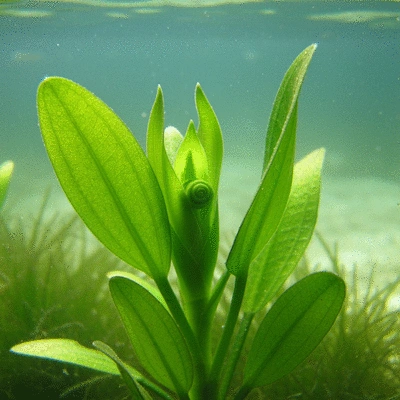
Growth Stages of Hydrilla: From Turions to Mature Plants
Dormant Stage: Characteristics of Turions and Tubers
In its dormant stage, hydrilla survives as turions and tubers. Turions are small, bud-like structures that float just below the surface, while tubers are found in the sediment. Both are critical for the plant's survival during unfavorable conditions. A fascinating fact is that these structures can remain viable for years, waiting for the right conditions to sprout!
Early Growth Phase: Recognizing Initial Development
As conditions improve, hydrilla enters its early growth phase. Look for horizontal growth along the bottom of the water body. During this stage, you’ll notice its distinctively shaped leaves starting to emerge, often in whorls. It's crucial to identify these early signs, as they can signal the onset of a potential infestation. For more details on identifying hydrilla, consult this comprehensive guide from Purdue University.
- Horizontal bottom growth
- Emerging whorled leaves
- Initial leaf size and shape
Paying attention to these details can help prevent a small problem from becoming a larger one!
Mid-Growth Phase: Distinct Features of Developing Plants
In the mid-growth phase, hydrilla is characterized by significant stem elongation and increasingly larger leaves. At this point, it's essential to familiarize yourself with its visual markers to differentiate it from native plants. The stems can reach impressive lengths, and the leaves become more pronounced, with the plant starting to dominate the aquatic environment.
Mature Stage: Identifying Dense Mat Formation
When hydrilla reaches maturity, it forms dense mats that can severely impact water quality and biodiversity. In this stage, you’ll see long stems and a thick density of leaves. Reproductive features such as flowers may also become visible, signaling that the plant is in full growth mode. Recognizing these characteristics is vital for taking action before hydrilla overwhelms a water body! The U.S. Army Corps of Engineers provides valuable information on hydrilla identification and public messaging to aid in community awareness.
Visual Identification Guide: Comparing Hydrilla Across Growth Stages
Side-by-Side Comparisons with Lookalike Species
It's vital to differentiate hydrilla from similar aquatic plants like Elodea. A visual guide can help with this! When comparing hydrilla to Elodea, focus on the following:
- Hydrilla has whorled leaves, typically in groups of 5-7, while Elodea has leaves arranged in whorls of 3.
- Hydrilla’s leaf edges are serrated, which can be a key distinguishing feature.
- Elodea tends to have a more rounded leaf shape compared to the pointed leaves of hydrilla.
Using visual aids can significantly enhance your identification skills, making it easier to spot hydrilla early!
Microscopic Features for Advanced Identification
For professionals in the field, microscopic characteristics can provide additional insights into hydrilla identification. Observing features like cell structure and leaf morphology under a microscope can confirm your identification. This level of detail is especially useful in regions where hydrilla coexists with other aquatic plants.
Environmental Factors Influencing Hydrilla Growth
Impact of Temperature, Light, and Nutrient Availability
Environmental conditions play a significant role in hydrilla’s growth patterns. Factors like temperature, light, and nutrient availability directly influence how and when hydrilla grows. Warmer temperatures and nutrient-rich waters create a perfect storm for hydrilla proliferation!
Seasonal Variations: Northern vs. Southern Populations
Did you know that hydrilla growth can vary significantly based on geographic location? Northern populations may exhibit slower growth rates due to cooler climates, while southern populations often thrive year-round. Recognizing these seasonal variations is crucial for effective management and tailored strategies.
The Role of Eutrophication in Hydrilla Proliferation
Eutrophication is a process that enriches water bodies with nutrients, often leading to excessive hydrilla growth. This nutrient enrichment can disrupt aquatic ecosystems, leading to a decline in biodiversity and water quality. Understanding this relationship is essential for anyone advocating for better management practices in freshwater ecosystems.
Early Detection and Control Strategies for Hydrilla Management
Identifying Newly-Germinated Turions
Detecting early colonization patterns is key to preventing dense mat formations. Look for telltale signs of newly-germinated turions, especially in late spring. Early identification can allow for swift action to control hydrilla before it becomes unmanageable!
Effective Control Methods and Best Practices
When it comes to managing hydrilla, a variety of strategies can be effective:
- Mechanical removal techniques to physically eliminate the plant.
- Biological control options, such as using grass carp that feed on hydrilla.
- Application of EPA-registered herbicides for targeted control.
Employing a combination of these methods can prove to be the most effective approach in managing hydrilla populations.
Monitoring Techniques for Ongoing Management
Regular monitoring of hydrilla populations is vital for assessing the effectiveness of your management strategies. Keeping track of hydrilla’s growth can help you adapt your methods and ensure that your efforts yield positive outcomes. Are you ready to take action and protect our waterways? Together, we can make a difference!
Pro Tip
Did you know? Early detection of hydrilla can save ecosystems from significant damage. Regularly monitor local waterways for signs of its growth, especially during peak seasons. By sharing your findings with local conservation groups, you can contribute to timely management efforts and help protect native species!
Frequently Asked Questions About Hydrilla Growth Stages
Q1: What are the main growth stages of Hydrilla?
A1: Hydrilla progresses through distinct growth stages: the Dormant Stage (turions and tubers), Early Growth Phase (horizontal growth, emerging whorled leaves), Mid-Growth Phase (stem elongation, larger leaves), and Mature Stage (dense mat formation, visible reproductive features).
Q2: Why is it important to identify hydrilla at different growth stages?
A2: Early and accurate identification at various stages is crucial for effective management and control. Recognizing hydrilla early helps prevent its widespread proliferation and allows for timely intervention, protecting native aquatic ecosystems from its invasive impacts.
Q3: How can I differentiate hydrilla from similar aquatic plants like Elodea?
A3: Key distinguishing features include leaf arrangement and edge. Hydrilla typically has 5-7 serrated leaves per whorl, while Elodea usually has 3 leaves per whorl and a more rounded leaf shape.
Q4: What environmental factors contribute to hydrilla's rapid growth?
A4: Hydrilla growth is significantly influenced by warm temperatures, ample light for photosynthesis, and high nutrient availability in the water. Eutrophication, or nutrient enrichment, often leads to its rapid proliferation.
Q5: What are some effective control strategies for managing hydrilla?
A5: Effective control strategies include mechanical removal (physically removing plants), biological control (using organisms like grass carp), and targeted application of EPA-registered herbicides. An integrated approach combining these methods is often the most successful.
Summarizing the Importance of Hydrilla Identification
Understanding the various stages of hydrilla growth is crucial for effective aquatic weed management. Each phase—from the dormant turions to the dense, mature mats—presents unique challenges and opportunities for control. By identifying these stages accurately, we empower ourselves to make informed decisions that can significantly impact local ecosystems.
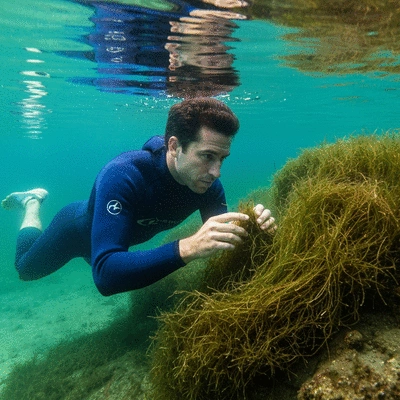
As an aquatic biologist, I have seen firsthand the difference that early identification makes. When professionals and educators are equipped with knowledge about hydrilla's growth stages, they can implement timely management strategies that help protect our precious waterways from its invasive spread. For instance, the Penobscot Nation has taken proactive steps in managing hydrilla to preserve their ancestral waters.
Call to Action: Stay Informed and Take Action
I invite you to engage with local conservation efforts and share your experiences regarding hydrilla management! By collaborating with fellow environmental stewards, we can enhance our collective understanding and devise effective strategies to combat this invasive species. Whether you’re a seasoned professional or a concerned citizen, your voice matters in this fight!
- Join local conservation groups focused on aquatic ecosystems.
- Participate in community events to raise awareness about hydrilla.
- Share your personal experiences on social media or local forums.
Taking action starts with knowledge and sharing—let's inspire each other to protect our waterways together!
Additional Resources for Aquatic Plant Identification
For those looking to deepen their understanding of hydrilla and other aquatic plants, I’ve curated a list of invaluable resources:
- Hydrilla Conservation Initiative Identification Guide - A comprehensive tool for recognizing hydrilla.
- EPA Invasive Species Resources - Policy updates and management strategies.
- NOAA Sea Grant Aquatic Plant Management Resources - Educational materials for professionals.
These links provide a wealth of information that can support your efforts in identifying and managing hydrilla effectively. Don’t hesitate to explore them!
Conservation Practices for Managing Invasive Aquatic Plants
Implementing best practices in conservation is essential for mitigating the ecological impact of invasive species like hydrilla. Here are some strategies to consider:
- Utilize integrated management techniques combining mechanical, chemical, and biological controls.
- Encourage community involvement in monitoring and reporting hydrilla sightings.
- Advocate for policy changes that support active management of invasive species.
By adopting these practices, we can collaboratively foster healthier ecosystems and support the recovery of native aquatic habitats. The Hydrilla Conservation Initiative is here to support you in your journey, ensuring that we all play a role in protecting our vital waterways.
Recap of Key Points
Here is a quick recap of the important points discussed in the article:
- Hydrilla is an invasive aquatic plant that forms dense mats, threatening native ecosystems.
- Identifying hydrilla at various growth stages is crucial for effective management and early detection.
- Key growth stages include dormant turions, early growth phase, mid-growth phase, and mature stage.
- Environmental factors such as temperature, light, and nutrients influence hydrilla growth patterns.
- Effective control methods include mechanical removal, biological controls, and herbicides.
- Regular monitoring is essential to adapt management strategies and ensure successful outcomes.
